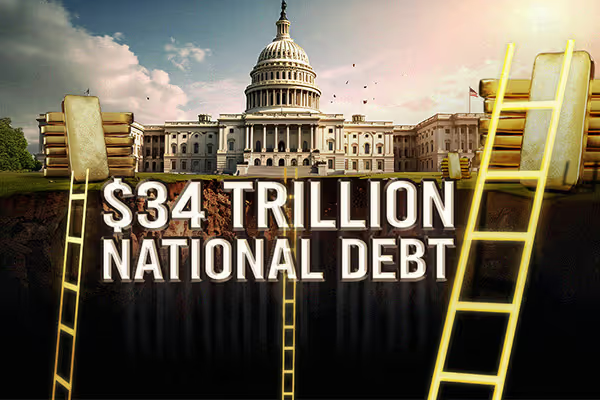Global uncertainty continues to push investors toward gold, as major financial institutions raise their price targets in response to a weakening U.S. economy, surging tariffs, and growing distrust in institutional credibility.
On August 4, Citigroup Inc. sharply revised its near-term gold outlook, increasing its three-month price forecast to $3,500 per ounce, up from $3,300. The bank also adjusted its expected trading range to between $3,300 and $3,600, citing “elevated U.S. growth and tariff-related inflation concerns” that it believes will dominate the second half of 2025.
“U.S. growth and tariff-related inflation concerns are set to remain elevated during 2H’25, which alongside a weaker dollar, are set to drive gold moderately higher, to new all-time highs,” Citi analysts led by Max Layton wrote in a note.
Last week, President Donald Trump imposed sweeping new tariffs on dozens of countries, including Canada, Brazil, India, and Taiwan. Speaking on CBS’s Face the Nation, U.S. Trade Representative Jamieson Greer said the tariffs are “likely to stay in place,” signaling little relief for importers and potentially higher consumer costs on the horizon.
The tariffs add pressure to an already fragile economic environment. Last month’s U.S. jobs report showed nonfarm payrolls increased by just 73,000 — far below expectations — reigniting expectations of a Federal Reserve rate cut. According to the CME FedWatch tool, markets are now pricing in an 81% chance of a rate cut in September.
Gold prices tend to benefit from such conditions. As a non-yielding asset, bullion becomes more attractive when interest rates fall and the U.S. dollar weakens, both of which appear increasingly likely.
Citi’s revised forecast comes amid mounting concerns about the Federal Reserve’s credibility and the accuracy of U.S. economic data. The bank also noted ongoing geopolitical risks, particularly surrounding the Russia-Ukraine conflict, as further justification for gold’s upside.
Since mid-2022, Citi estimates that gross gold demand has climbed by over one-third, helping to nearly double prices by the second quarter of 2025. The rally has been supported by “strong investment demand, moderate central bank buying, and resilient jewelry demand despite higher prices,” the bank added.
Spot gold was trading at $3,373 per ounce as of the afternoon of August 4.
Fidelity International echoed Citi’s bullish stance. Fund manager Ian Samson noted that some of the firm’s cross-asset portfolios have doubled their gold allocations in recent months. “We saw a clearer path to a more dovish Federal Reserve,” Samson said, adding that gold “makes sense” for diversification, especially in a turbulent market.
Fidelity projects gold could climb as high as $4,000 an ounce by the end of 2026, citing persistent global conflicts, rising fiscal deficits — especially in the U.S. — and sustained central bank accumulation.
“The market has been concerned about a U.S. recession due to high interest rates for the past three years,” Citi analysts wrote. “This fear has likely only increased over the past six months given President Trump’s largest-in-a-century trade tariff agenda.”
As economic and political headwinds mount, gold is extremely well-positioned to remain the preferred safe haven.
Gold’s Momentum Continues Amid Economic and Policy Shifts
With rising tariffs, slowing growth, and an increasingly dovish Fed outlook, many investors are turning to gold not just for performance—but for protection. At Reagan Gold Group, we help clients preserve their wealth with IRS-approved physical gold and silver IRAs, along with secure home delivery options.
Washington may be reshaping the economy, but gold can help safeguard your future.















